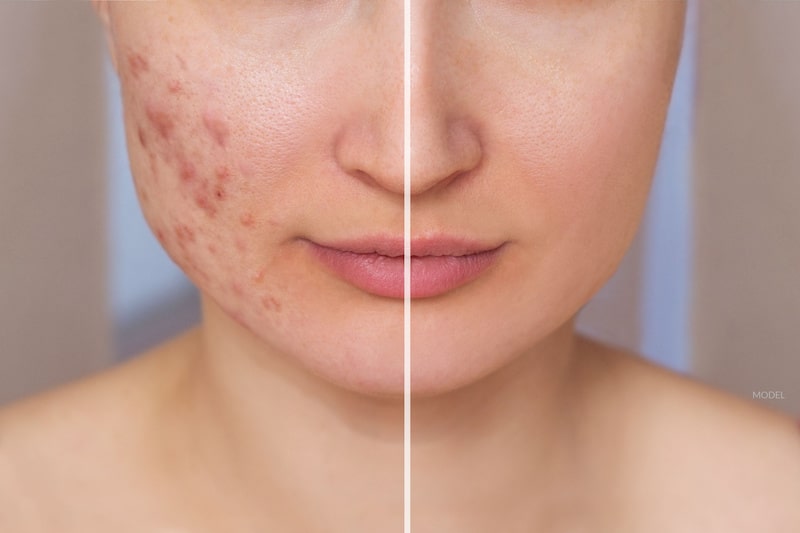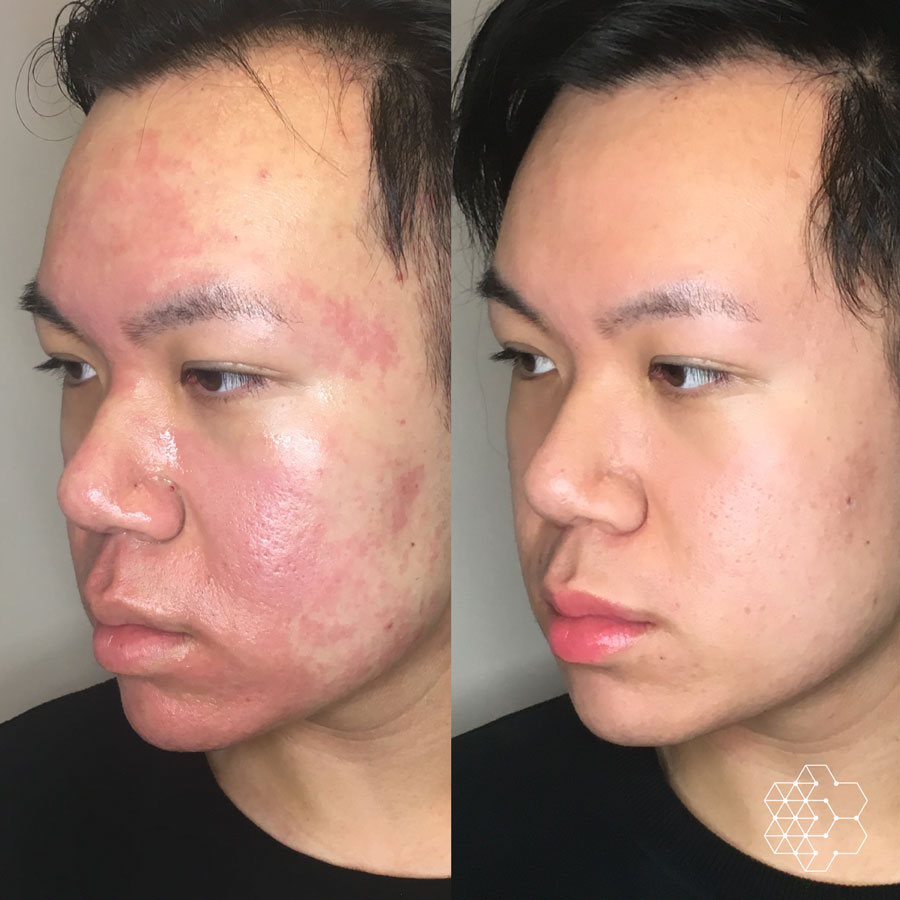Advanced Acne and Acne Scars Treatment: Say Goodbye to Blemishes
Wiki Article
Checking Out Skin Conditions: Identifying and Treating Acne Scars for Healthier Skin
Acne scars represent a substantial worry for people seeking to maintain healthy and balanced skin, as they can impact both appearance and self-worth. Recognizing the numerous types of marks, from atrophic to hypertrophic, is crucial for establishing proper treatment choices. While expert interventions like chemical peels and microneedling can be effective, the relevance of personalized treatment plans can not be overstated. Moreover, preventative steps play a vital duty in decreasing future scarring. As we discover these elements, one need to take into consideration how the right approach can cause transformative results.Recognizing Acne Scars
Understanding acne marks is crucial for anybody that has actually experienced severe acne, as these marks can have an enduring effect on both physical look and psychological wellness. When the skin undertakes inflammatory responses during active acne lesions, acne scars develop. The extent of scarring is often influenced by elements such as the sort of acne, its period, and individual skin qualities.The body's all-natural recovery procedure can lead to either atrophic marks, which look like anxieties in the skin, or hypertrophic marks, which are elevated and arise from overflow of collagen. In addition, the emotional toll of acne marks must not be taken too lightly; many individuals report feelings of shame, anxiety, and lowered self-confidence. This psychological worry can influence social communications and general high quality of life.
Dealing with acne scars needs a detailed understanding of their formation and effect. Awareness of the possibility for long-term effects connected with unattended scars can motivate people to look for proper therapies. Early intervention and effective management approaches can significantly boost skin look and boost mental resilience, stressing the relevance of comprehending the complexities bordering acne marks.
Types of Acne Scars
Acne marks can be categorized right into unique types, each exhibiting one-of-a-kind features and needing specific therapy methods. The main types of acne marks include atrophic, hypertrophic, and keloid scars.
Hypertrophic marks, in contrast, are increased above the skin degree and are the outcome of excessive collagen production during the healing procedure. They typically continue to be within the boundaries of the initial acne lesion. Keloid marks are similar however prolong beyond the initial injury site, forming larger, raised areas that can be scratchy or unpleasant.
Comprehending these sorts of marks is important for choosing appropriate treatment choices. Different scars may respond better to particular treatments, such as laser therapies, fillers, or medical treatments, highlighting the value of a customized technique to acne scar administration.
Determining Your Scars
When assessing the appearance of your skin, it is essential to accurately identify the sort of scars existing, as this will certainly educate one of the most efficient treatment strategy. Acne scars usually fall under two categories: atrophic and hypertrophic marks. Atrophic marks, which are the most common, appear as clinical depressions or imprints on the skin. These can even more be classified into ice-pick scars, boxcar marks, and rolling scars, each exhibiting distinctive attributes and needing various methods for evaluation.Hypertrophic scars, on the various other hand, are increased and take place because of excessive collagen manufacturing throughout the recovery process. Acknowledging the specific functions of your scars-- such as depth, size, and appearance-- is essential for correct identification. In addition, consider the circulation of scars throughout your skin, as this can suggest the extent and duration of the acne condition.
Involving with a dermatologist can supply valuable insights right into the nature of your marks, aiding in the distinction in between numerous types. A detailed understanding of your scars will eventually bring about an extra tailored and efficient therapy strategy, ensuring a clearer and much healthier skin.
Therapy Options Available
Identifying the details sort of acne scars present on your skin lays the foundation for discovering reliable therapy alternatives. Common sorts of acne scars include atrophic (depressed), hypertrophic (increased), and post-inflammatory erythema.For atrophic marks, alternatives such as chemical peels, microneedling, and laser resurfacing are extensively made use of. Chemical peels off use acids to remove the outer layer of skin, promoting new cell growth. Microneedling involves tiny needles that create micro-injuries, stimulating collagen production. Laser resurfacing targets damaged skin cells, improving texture and tone.
Hypertrophic scars can be treated with corticosteroid injections to squash the mark or laser treatment to minimize soreness and boost look. acne scars. Silicone gel sheets and stress dressings might likewise help in taking care of raised scars
In enhancement, dermal fillers can briefly fill out clinical depressions from atrophic marks, while medical excision may be ideal for extreme situations. Each therapy option has its advantages and factors to consider, making it important to seek advice from a dermatologist. They can offer tailored suggestions based on the kind and seriousness of your marks, along with your skin type and overall wellness.
Tips for Prevention
Effective prevention methods can significantly minimize the likelihood of establishing acne marks. Using non-comedogenic products aids prevent blocked pores, which can aggravate acne.Avoiding need to stand out or pick acne lesions is crucial, as this can bring about deeper skin damage and increase the danger of scarring. Rather, take into consideration using a the original source cold compress or over the counter therapies to lower swelling and redness.
Sunlight defense is an additional vital aspect of prevention; ultraviolet (UV) rays can visit this web-site darken scars and impede the healing procedure. Using a broad-spectrum sunscreen with at the very least SPF 30 daily can shield the skin and advertise also recovery.
Finally, keeping a balanced diet regimen rich in minerals, antioxidants, and vitamins supports skin wellness and healing. Remaining moisturized and handling stress and anxiety levels can additionally play a substantial function in lowering acne flare-ups. By applying these strategies, individuals can dramatically decrease their chances of establishing acne marks.

Final Thought
In verdict, understanding and identifying acne scars is important for efficient treatment and accomplishing healthier skin. Different kinds of acne marks, including hypertrophic and atrophic marks, require certain treatments tailored to private requirements. Treatment choices range from chemical peels and microneedling to corticosteroid injections, emphasizing the importance of speaking with a skin specialist. Furthermore, embracing a gentle skincare regimen and shielding the skin from UV direct exposure can substantially add to the avoidance of additional scarring and general skin health.
The body's all-natural recovery procedure can result in either atrophic scars, which appear as clinical depressions in the skin, or hypertrophic scars, which are increased and result from overflow of collagen. They are further split right into three subtypes: ice choice scars, link boxcar scars, and rolling marks. Acne scars normally drop into two categories: atrophic and hypertrophic marks. These can additionally be classified right into ice-pick scars, boxcar marks, and rolling scars, each showing unique qualities and requiring various methods for assessment.
Different kinds of acne scars, consisting of atrophic and hypertrophic scars, require specific interventions customized to private demands.
Report this wiki page